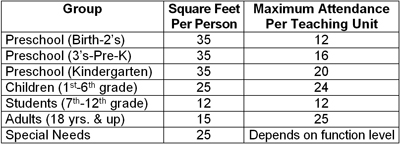There are several primary considerations for effectively organizing groups for Sunday School/Small Groups. Before developing your structure, account for the total active church membership. Second, determine whether the groups will be offered on-campus, off-campus, or both. Finally, evaluate community and church demographics. Once the primary considerations are determined, you can begin grouping people for effective community.
Grouping people effectively requires intentionality. Whether using on-campus or off-campus groups, focus should be given to creating genuine community. This is accomplished by modeling the biblical principles of Acts 2:42; “And they devoted themselves to the apostles’ teaching, to fellowship, to the breaking of bread, and to prayers.” (HCSB). When a group focuses on studying God’s Word, praying for one another, spending quality time getting to know one another, and meeting together consistently, an environment is cultivated for community. Once community is created, there is a natural attraction for persons to connect with the group. The genuine community which exists is a warm, inviting atmosphere.
Simple group dynamics state persons connect with others persons of affinity. Effective grouping, therefore, works best through these considerations. There are several options to group persons.
Age-grade
This category groups persons who are at the same age. Smaller churches typically have larger age-spans in these groups which creates part of the challenge in dynamics to grow a particular group. Twenties typically do not have much in common with forties, yet the smaller the congregation, a young adult class may span the ages of 20-49 year old. Whereas critical mass is important, a healthier balance may need to be considered with emphasis given to the group-size:age-graded ratio., (ratio is philosophical, most off-campus groups will be below 15, on-campus groups will vary in size based on leadership abilities).
Life-Stage
This category groups persons who are at a similar life-stage. This may be determined by age of the children, grandchildren, retirement, the fact of being a boomer, etc. An example is a group may be for parents of elementary age children. The effectiveness of this model is most persons are going through similar experiences whether professionally in the marketplace or personally in home life.
Note: when using the age of the children to group parents, you may have older 40s in the class as persons who married and had children later in life compared to couples in their 20s or early thirties with the same age children. Using the age of children may disregard couples without children which are an ever-increasing portion of the population.
Interest
This category groups persons around interest. Categories may include men only, women only, sportsmen, outdoors men, marketplace women, etc. The effectiveness of this model is inherent in the “interest” itself. The challenge of this model is using the “interest” group to connect while keeping the study focused on God’s Word.
Proximity
There are two options in using off-campus groups. You may choose a similar structure as the on-campus for creating community groups centered around age, life-stages, and/or interest. The other option is proximity groups. If your demographics draw from all over the community, an off-campus group may be organized with persons who live in the same neighborhood or proximity. This option may bring together varied generations into community groups. This multi-generational approach creates inherent mentor-mentee relationship opportunities. A challenge to this approach is the participants do not have a common-bond of going through similar “life-stage” milestones together. A positive is an older person in the group has “been there, done that” and can share from his/her life experiences.
 Effectiveness for either group, on-campus or off-campus, weighs on intentionality of the leadership team. Leadership development is core to either option succeeding. Leaders must be prepared and equipped to reproduce themselves as the group connects and grows. Effective groups have an outward focus. As group leaders insure all persons are connecting, caring environments are created and ministry occurs.
Effectiveness for either group, on-campus or off-campus, weighs on intentionality of the leadership team. Leadership development is core to either option succeeding. Leaders must be prepared and equipped to reproduce themselves as the group connects and grows. Effective groups have an outward focus. As group leaders insure all persons are connecting, caring environments are created and ministry occurs.
More information regarding this topic can be found in Missionary Sunday School by David Francis.




